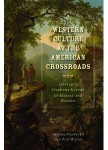(Re)Considering the Independent Sector
Introduction
Richard Cornuelle’s Reclaiming the American Dream: The Role of Private Individuals and Voluntary Associations has been subjected to numerous interpretations in the more than half a century since its original publication in 1965. For many readers familiar with the book, Reclaiming the American Dream may now seem old news—nearly sixty years have passed since its first printing, it references current events from the Kennedy and Johnson years long since past, and it seems, at first glance, to be merely a forerunner argument for more recent, up-to-date formulations of the American nonprofit sector. Nonetheless, with Cornuelle’s death in 2011, it is essential that we remind ourselves of the importance of this most enduring idea and ideal.
The independent sector Cornuelle sought to articulate way back then is easily assumed to have become the national statistical and organizational reality others call “the nonprofit sector” or the “nongovernment sector.” Today the features and character of the nonprofit and nongovernment sectors are widely studied and written about, and there is even a national trade association named Independent Sector, headquartered (where else?) in Washington, D.C. This group is not alone in attempting to use Cornuelle’s evocative phrase for its own purposes. Alternatively, for those who choose to read Cornuelle’s message as supporting pro-market, anti-state politics, “conservative” or “libertarian” positions, Reclaiming the American Dream is sometimes read as a political manifesto that reinforces those beliefs. None of these interpretations, however, captures the real essence of Cornuelle’s argument or embraces the full value of his contribution to a contemporary understanding of American culture in a global context.
Those who reread Cornuelle’s book, particularly the 1993 Transaction Books edition with its very useful introduction by Frank Annunziata and an afterword by the author, will encounter an enlightening, thought-provoking argument that ultimately undermines and subverts many of the things that have been said and believed about the book, and it makes clear why the author spent so much time, energy, and money in the last years of his life supporting efforts like the conference that led to the essays in this volume. Philanthropy is an outstanding example of independent, individual, and collective action of the type discussed by Cornuelle. Reclaiming the American Dream is not really many of the things that are said about it. It is not out of date, having been realized in the conception of an “independent” third or nonprofit sector (and absorbed, much to Cornuelle’s dismay, in the trade association-cum-national private-governmental collaborative named Independent Sector). Nor is the book’s enduring value primarily as a conservative or libertarian anti-state manifesto (except among a small circle of adherents who can read it only that way).
Reclaiming the American Dream is instead a work of novelty and freshness which continues to enshrine a distinct vision of the important role of independent action by private individuals and voluntary associations in American life. Not since Alexis de Tocqueville, 120 years before, has this idea had such a coherent defender. The book is, first and foremost, a reaffirmation of continuing American faith in the power of people in their daily lives to act together outside of politics and without the leadership of government (or, I would add, that other great behemoth, the price system) to effect change in their life-worlds. Independent action is quite apart from—one might say, regardless of—the machinations of the major economic and political institutions of government and markets. This is a message that transcends day-to-day politics—particularly the tawdry, red-blue politics of the present era—and goes to the heart of who we are as a people and a culture.
One purpose of this paper is to affirm the continuing importance of the independent sphere or sector as Richard Cornuelle first constructed it in 1965. The other is to clear up, as he tried to do at various times throughout his life, a few misunderstandings about what Cornuelle actually wrote and later said he intended, and to extend his basic vision of independent action in some additional directions with implications for our evolving understanding of philanthropy.
It is very easy to misread Cornuelle’s book as part of the attempted paradigm shift that Peter Dobkin Hall called “inventing the nonprofit sector” (1992; see also Zunz 2011). But Cornuelle’s independent sector should not be seen as a kind of precursor of later, more detailed, models of the nonprofit sector from Weisbrod (1986), Powell (1987), or any of the multiple publications of Lester Salamon (e.g., 1999).
Such a misreading is grounded in part in confusion over Cornuelle’s use of the term “sector.” Although most of those cited use the term today in the macroeconomic sense of a statistical aggregate of industries, Cornuelle’s use was far more metaphorical. The independent sector as Cornuelle first articulated it is, by its very nature, different and distinct from the statistically tabulated national nonprofit sectors of tax-exempt corporations, as that idea has become known among economists, organization researchers, and others and enshrined in the annual ARNOVA conferences. In the subtitle as in the text of his book, Cornuelle calls attention specifically and exclusively to the role—that is, the sector, or sphere—of private individuals and voluntary associations. By contrast, adherents of the nonprofit sector model focus first and foremost on measuring the quantitative impact of tax-exempt corporations and display little interest in either individual persons or voluntary associations.
In Cornuelle’s text, independent sector institutions are—first and foremost—independent: active, engaged individuals, associations, and foundations acting outside of government and the markets. There is a fundamental point of psychology and sociology at issue here. The book makes little mention of corporations, tax-exempt or otherwise, or of organizations other than voluntary associations and foundations. Thus it is safe to assume (albeit in somewhat sociological language) that Cornuelle offered us his vision of the independent sector as the domain of the distinct form of interpersonal relations identified traditionally as voluntary association, and an extended form of interaction by private individuals that in the current vernacular is often termed “networking.” This is, first and foremost, a matter of differing units of analysis: whereas those working with the nonprofit sector concept are primarily concerned with the macroeconomic impact of corporations aggregated together into a statistical category called the nonprofit sector, Cornuelle’s concerns are more clearly directed at the face-to-face or micro-level of living individuals engaged with one another.
This approach, combined with Cornuelle’s enduring libertarian individualism, which is evident throughout the main text and restated in the introduction and the afterword, makes it safe to assume that in considering the domain of the independent sector Cornuelle had something in mind in his use of the term other than the kind of national-level clustering of tax-exempt corporations interwoven with government that Salamon (1999), the World Bank, and others project as the nonprofit, or nongovernmental, sector. Cornuelle’s use of the adjective independent is a further important sign of his intent. Lest there be any mistake on this point, Annunziata quotes Cornuelle’s characterization of a nonprofit sector cooperating with government as “short-sighted, self-defeating and almost totally mistaken.” The independent sector, in Cornuelle’s view, is “not an instrument of the state but …an essential alternative to the state” (1993 [1965], xxi).
All of this raises numerous further questions, such as what Cornuelle really meant by the term independent sector; whether such a thing existed in 1965 or exists today, or is something he envisioned for some far-off, future libertarian utopia; and why this six-decade old conception may still be important to us today.




